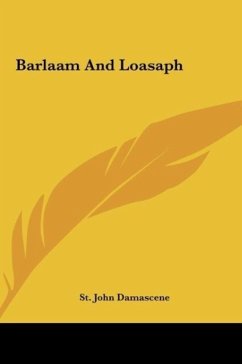There was at that time a certain monk, learned in heavenly things, graced in word and deed, a model follower of every monastic rule. Whence he sprang, and what his race, I cannot say, but he dwelt in a waste howling wilderness in the land of Senaar, and had been perfected through the grace of the priesthood. Barlaam was this elder's name.
Hinweis: Dieser Artikel kann nur an eine deutsche Lieferadresse ausgeliefert werden.
Hinweis: Dieser Artikel kann nur an eine deutsche Lieferadresse ausgeliefert werden.








